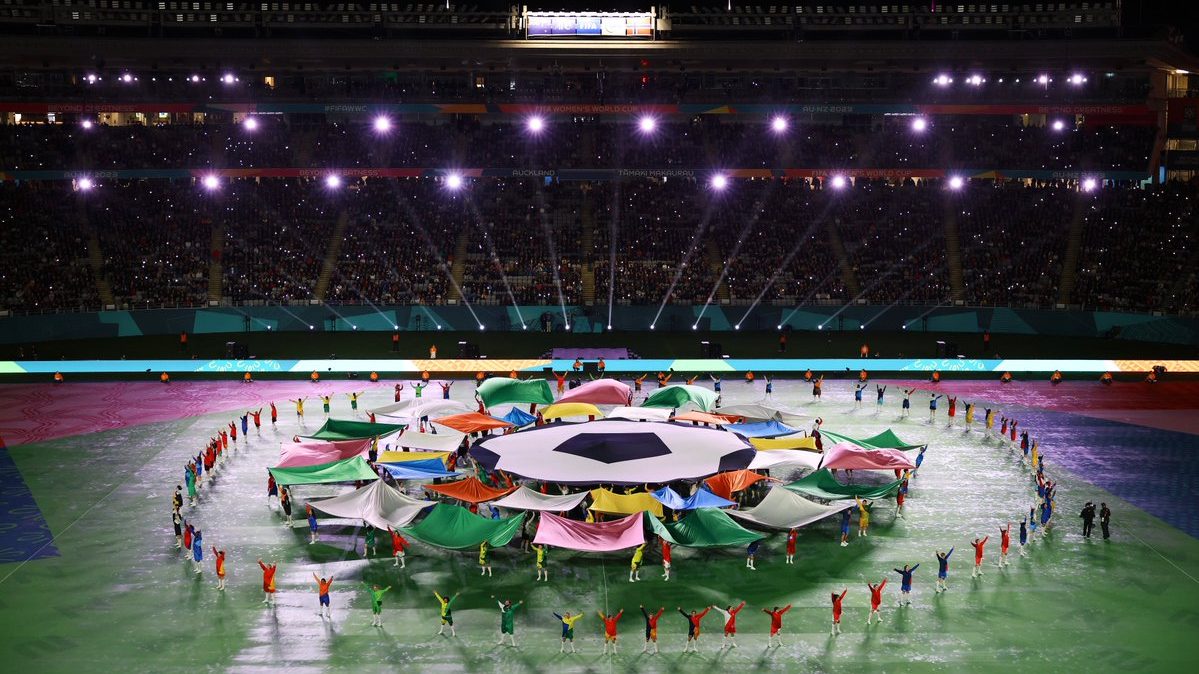This year’s FIFA Women’s World Cup will be the first-ever co-hosted tournament from the edition.
The first-ever co-hosted Women’s World Cup has kicked off in Australia and New Zealand, featuring 32 teams with various countries debuting for the first time.
This year’s edition is set to be the biggest women’s football tournament since its inception in 1991, both on and off the pitch.
On the television screen, the Women’s World Cup will have its broadcasting rights sold as a standalone product rather than being packaged as a bonus of purchasing broadcasting rights for the Men’s World Cup.
A proud moment for the game, FIFA President Gianni Infantino hailed the deal as a chance to provide exposure for the tournament that will aim to reach a global audience of 2 billion, up from 1.12 billion at the previous edition in France.
Eight countries will make history with a debut appearance at the first Women’s World Cup to be hosted by two countries and the first FIFA senior competition for either men or women to be held across two confederations.
A remarkable feat demonstrating the growth of women’s football over the past decade, the Philippines, Republic of Ireland, Zambia, Haiti, Vietnam, Portugal, Panama, and Morocco will join the pitch for the first time.
Representing the Philippines, the women’s side has become the first ever side to qualify for a FIFA tournament across all boards of football in the country.
Following a quarter-final penalty shoot-out against Chinese Taipei, the 46th-ranked Philippines team will look to compete in a tournament that has been dominated by a select group of national sides, with just four champions spread across North America, Europe, and Asia.
Ireland, which only slightly missed out on qualification for the past three consecutive World Cup tournaments, will now step out at their first-ever FIFA Women’s World Cup to face Australia, Canada, and Nigeria.
Zambia and Morocco are among the four African squads playing in this year’s tournament that are anticipated to be dubbed as dark horses.
All eyes will be on Morocco’s Ghislane Chebbak, named Player of the Tournament and top goal scorer at the 2022 Women’s Africa Cup of Nations.
Following her success last summer and Morocco’s triumph at the 2022 Men’s Qatar World Cup, Chebbak’s squad will look to add to their making of history.
The only representative of the Middle East and North Africa region, Morocco’s football team also includes Nouhaila Benzina – the first hijabi player at the 2023 Women’s World Cup.
Breaking barriers, FIFA tweeted, “Nouhaila Benzina will make history at the FIFA Women’s World Cup in Australia and New Zealand 2023. The Moroccan star will be the first player to compete in the tournament while wearing a hijab.”
Football watchers expect the United States to run it back to become the first team in the competition’s history to win the title three times in a row, however this may now be challenged with the expansion of the competition.
Regardless of who comes up on top, this year will also see teams win a more significant sum of money in prize-winning.
This edition’s total prize pool is $110 million, $80 million greater than the prize pool of the previous tournament, and will give prize payments directly to players as well as the associations.
After years of teams withholding competition prize money from players and or not paying them at all, FIFA will ensure that athletes receive their cash.
With the group stage beginning on 20 July and running over two weeks finishing on 3 August, group winners will compete in the round of 16, which takes place from 5-8 August.
The quarter-finals are scheduled for 11-12 August, with the first semi-final on 15 August 5 before the finals on 20 August.
A third-place play-off will be played the day before the final on 19 August.







